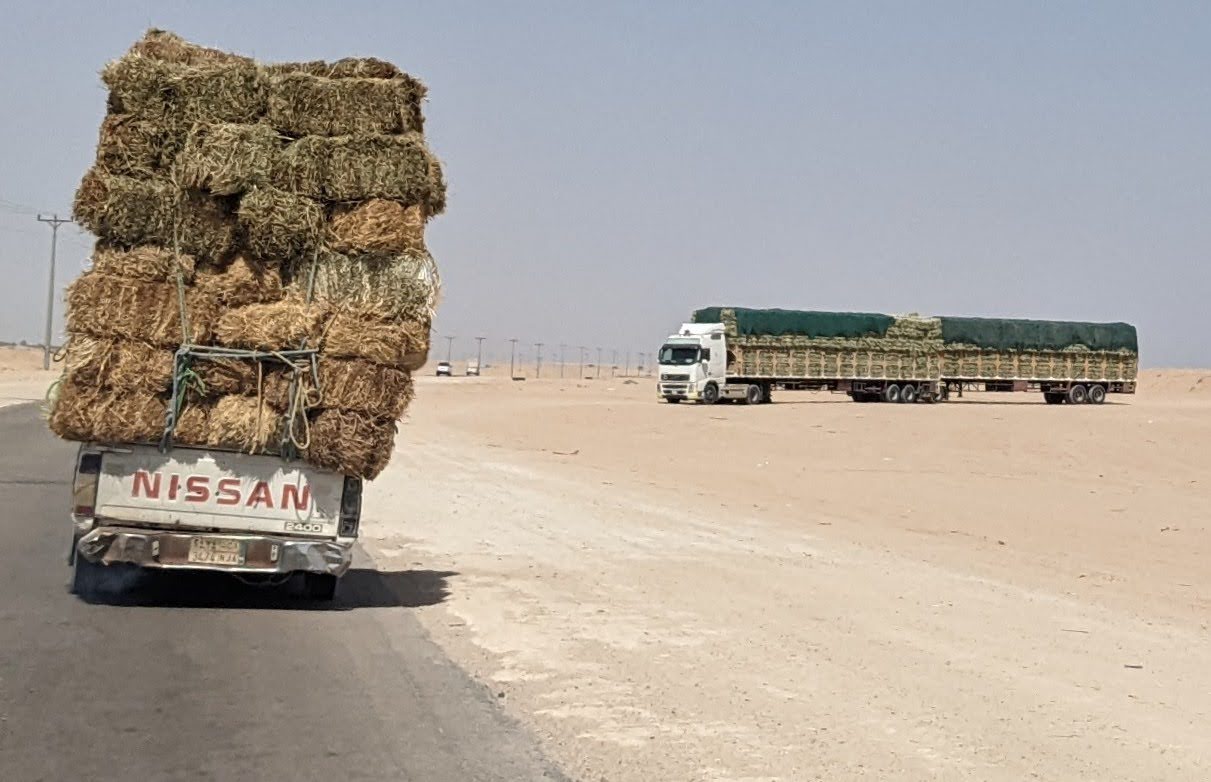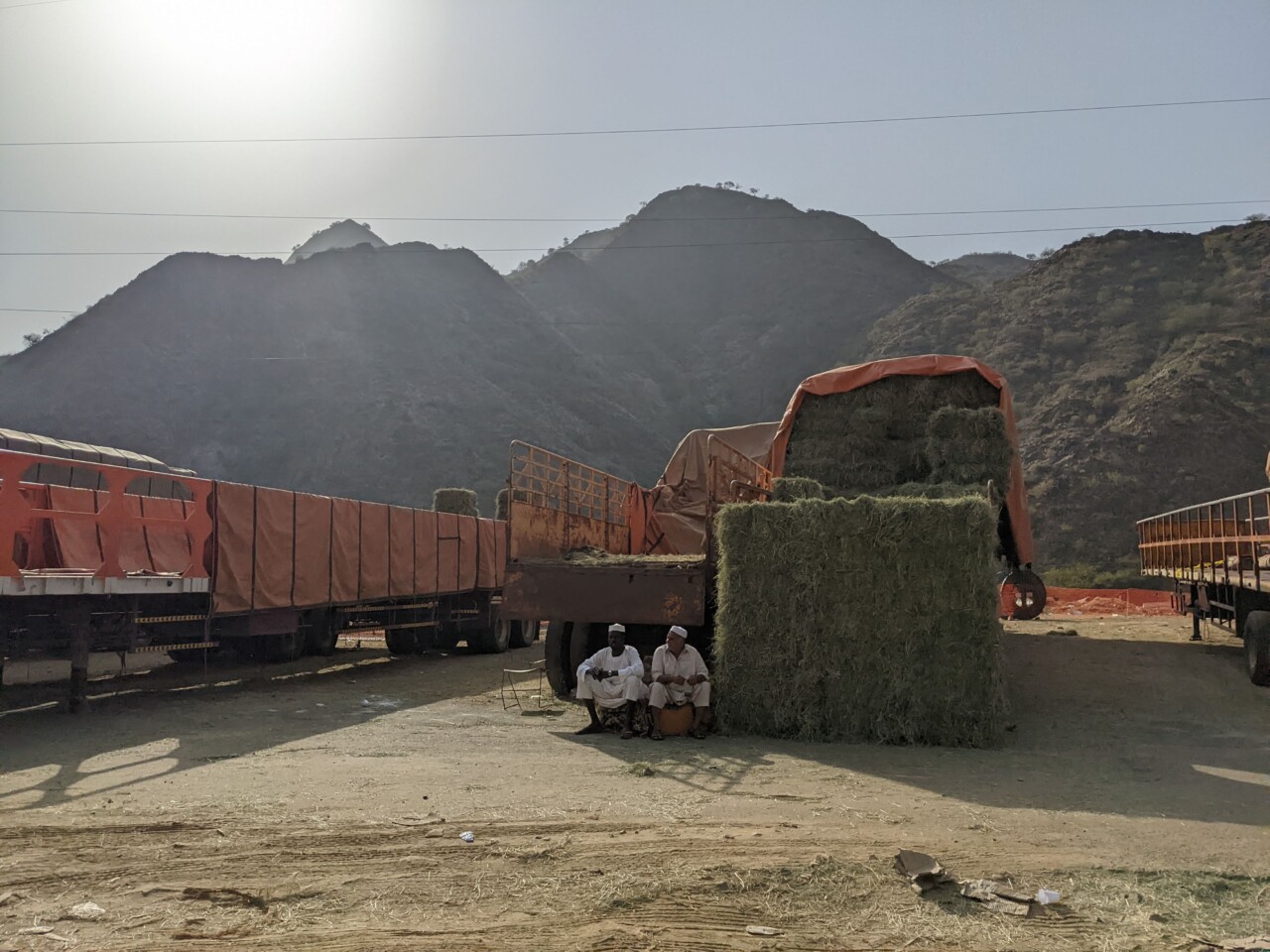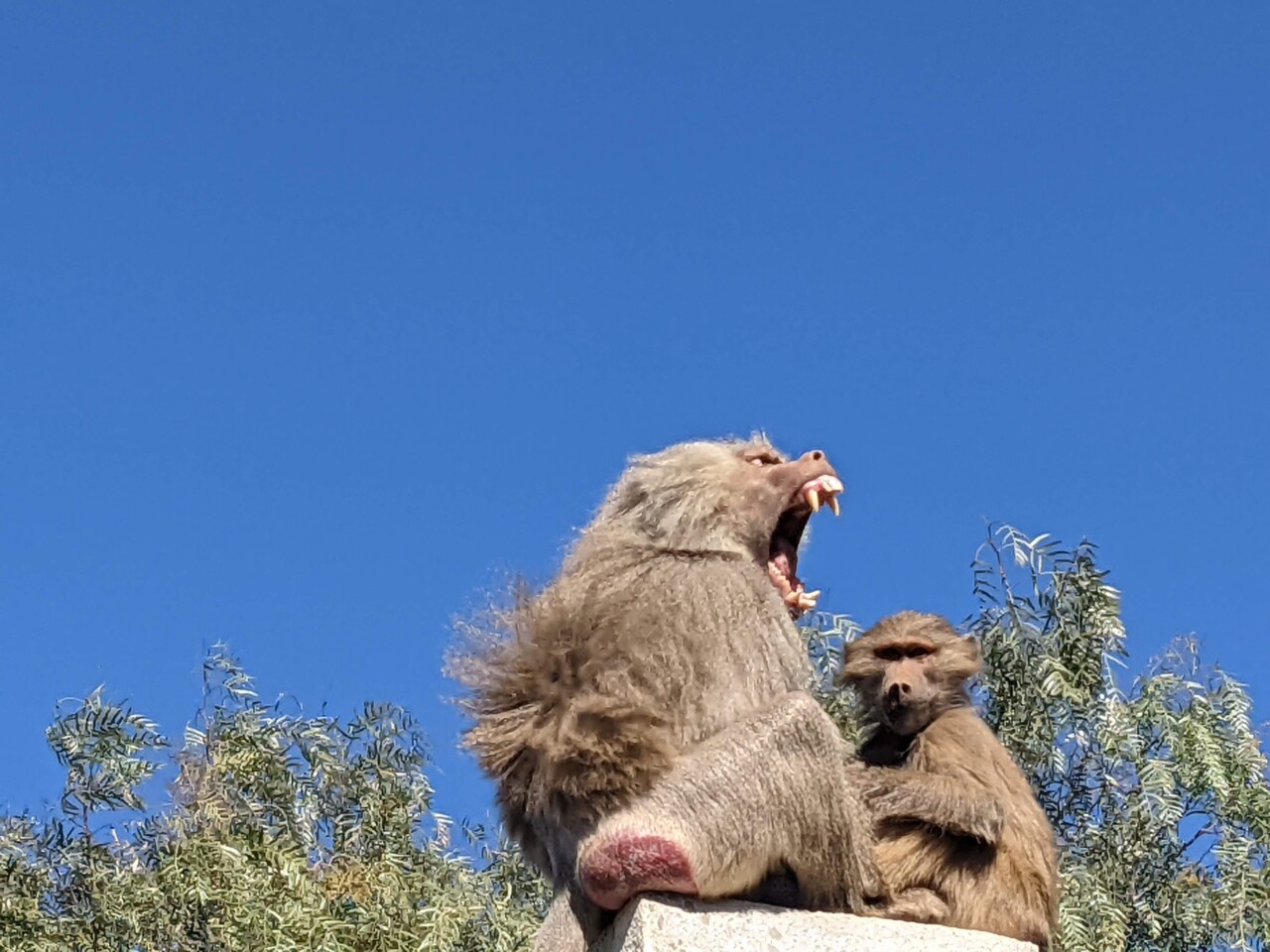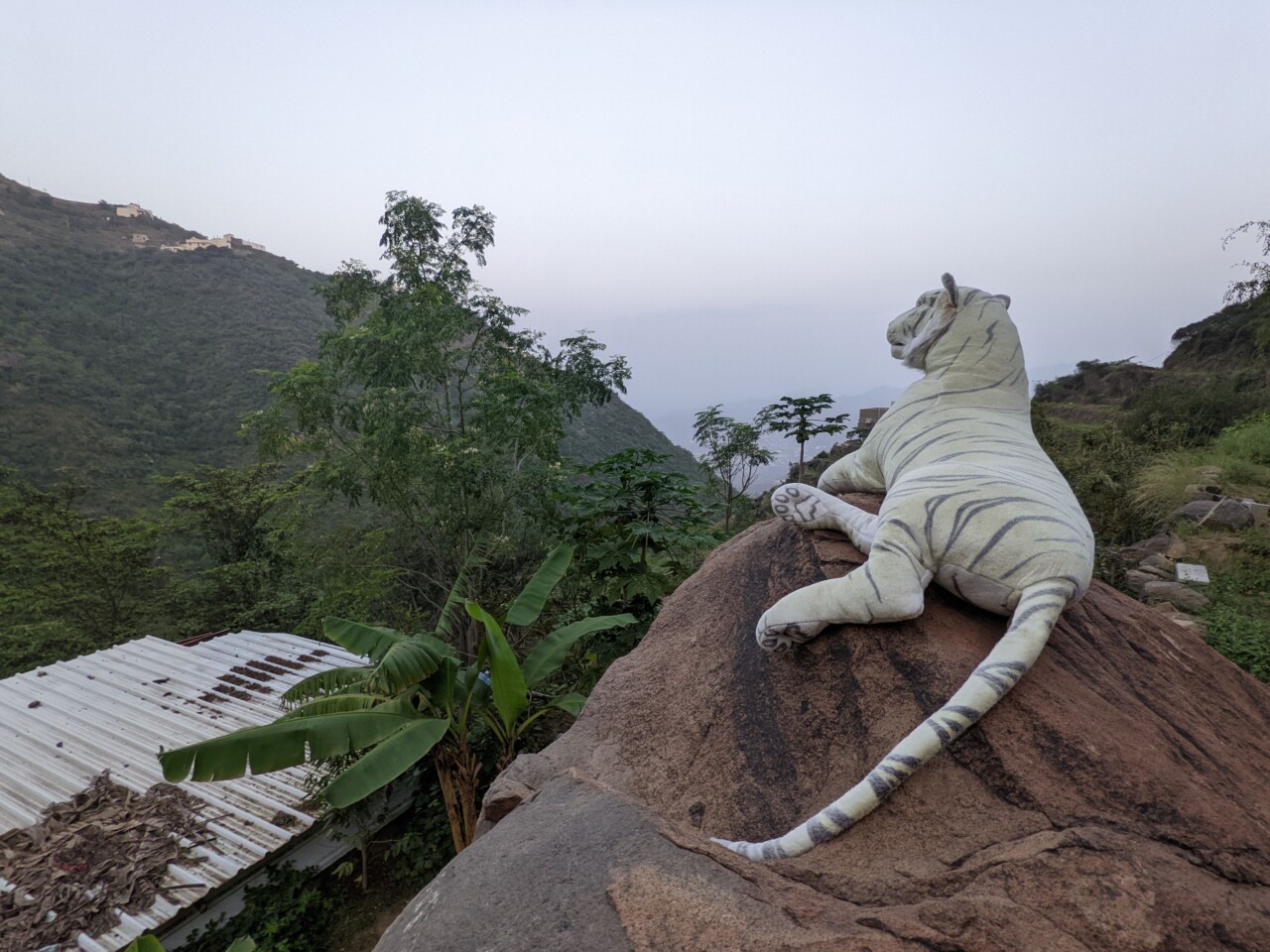A caravan consists of a long line of camels, heavily loaded with trade from the East, which was particularly lucrative at the time. Spices, for example, and herbs. Tea, coffee, precious metals. And incense, myrrh, for religious services.
That caravan had to travel three thousand kilometers overland from the deep south of Arabia across the peninsula to the north, towards those religious services and wealthy markets.
Only about six centuries ago, when shipping mastered the treacherous monsoon winds, did caravans largely disappear from the Arabian horizon.
That fate now threatens the camel, or rather: the dromedary, a source of pride and lyricism, but also of proteins and barter for Bedouins. The larger the herd, the richer and more powerful the owner. The true Bedouin prefers to let his camels graze freely in the vast Saudi space, although in times of tribal conflicts, a shepherd often has to be present.
But there are no more tribal conflicts, and since Saudi Crown Prince Mohammad bin Salman (MbS) launched his Vision 2030 to guide his country into the future, more and more areas are off limits for camels because they graze everything bare. “So that Saudi Arabia’s nature can recover,” nods Mohammed al Mustaneer, in the aforementioned hall in Najran.
Mohammed has just treated us to a lavish dinner and is now answering all questions, sitting on the ground next to a bubbling shisha.
Answering pressing questions is not second nature to Saudis. They usually return a piercing look or bluntly ask: why do you want to know that? But Mohammed is used to curiosity; he is an archaeologist and has been guiding Westerners in his vast country, as large as Spain, France, Italy, Great Britain, and Germany combined, for years.
Camel Hotels
Not long ago, Mohammed – a man of standing within the Yam, a prominent tribe – also sold almost all his camels. “If you’re a Bedouin, the world is at your feet, but that’s over now. I still have twelve left. You have to keep looking for them, and there’s no time for that nowadays. No, you can’t be a Bedouin and a tourist guide at the same time.”
To give Saudi nature a fair chance, Saudis must keep their camels on their own land, but that’s practically impossible. Wealthy Saudis can house their camels in camel hotels, where Bedouin romance is already hard to find.
To ease the burden for less wealthy Bedouins, the Saudi state still subsidizes the purchase of hay, up to 1000 Saudi riyals, a tidy sum of 250€ per year.
This Saudi hay is grown near deep water basins under the desert, where long sprinkler systems make slow mega-circles above.
In satellite images, they create a mysterious field of green dots in the middle of the Arabian Peninsula. Egyptians keep the circles running, Pakistanis transport the hay bales on their colorful trucks to tall Sudanese, who trade the bales at strategic crossroads. So much for the conspicuous Saudi division of labor.
On other Saudi habits detrimental to Saudi nature, increasingly heavy fines are imposed, Mohammed knows from a cousin who is an environmental police officer around the capital Riyadh. “Cutting down trees, very much forbidden and fined with 600 riyals (150 euros) per kg of wood. Making fires – Saudis love to picnic, preferably deep into the night and with a campfire – without ground protection: 1000 riyals.” All to help Saudi nature back on its feet.
The Rangers of the Empty Quarter
Nature restoration is also central in Uruq Bani M’arid, a protected corner of the world’s largest sand sea Rub al Khali: the Empty Quarter. We drive from highway 177 onto the limestone plateau and walk into a large brown tent, the headquarters of the local rangers.
A hundred rangers guard about as many Arabian oryx in an area the size of Lebanon. They are the last in the world, explains zoologist Hamad. “And a hundred sand gazelles. Maybe two hundred, we released forty more last week.”
The Arabian oryx is a small, white antelope species, likely the model for the mythical unicorn. The last wild oryx disappeared in 1972 after years of hunting. The hundred now living in the park come from breeding programs.
Ten oryxes were added last week. “They don’t all make it, no,” says Hamad. It is a vast area to guard, and especially the gazelles wander outside the unfenced park and encounter hunters. “Found a dead gazelle two days ago, three last week. All shot,” says Hamad.
Ranger Abdallah takes us on a spectacular ride over sand dunes that you have to go up and down like a sand surfer. At a feeding station, we see a gazelle gracefully run away on high legs. Back at headquarters, a dead specimen lies in the sand. For her, the leap from the breeding program was probably too great.
Then the sun sets behind the horizon, and we are allowed to camp at the foot of a sand dune. “As long as you stay out of their sight,” points Hamad to the east, where the Prince of Najran has settled with his winter camp. There are buses for staff, long white caravans for higher staff, a series of trucks with trailers, and several circus-sized tents. Generators hum. We keep quiet.
Now We Have the Monkeys
Four hundred kilometers to the southwest, we drink tea with pausing teachers in a village near the Yemeni border. Here, no sand dunes but rocky mountains up to 3000 meters high. Warm air rising from the Red Sea collides with it like mist – sometimes as rain – and colors the surroundings green. “No, they have all been shot,” says Mufarig, who teaches Arabic and religion to village children when I ask about the Arabian leopard.
“The leopards ate the sheep. So they were shot. It’s a shame. Now we have the monkeys.” There are very few Arabian leopards left, less than two hundred on the entire continent. About twenty in the Jebl Akhdar, the green mountains of Oman, and the rest in the highlands of Yemen. An expensive program for the reintroduction of the Arabian leopard in Saudi mountains is underway, but it is progressing very slowly.
The result of the near disappearance of the leopard – and along with it, the coveted hunting trophies Arabian wolf and striped hyena – is an explosion of baboons (Papio hamadryas).
The roads in southwestern Saudi Arabia wind sensually through the mountains. In many hairpin bends, a gang of baboons patiently waits on the high curbs. It is not uncommon to see cars speeding away, leaving a group of fighting baboons in a cloud of sand and food packaging.
Because much more than the extinction of natural enemies, the monkey explosion is due to the love for the animal, apparently ingrained in the Saudi soul. Originally, the baboon lived high in the mountains in small, shy groups, but these ‘commensal’ baboons are gangs of up to four hundred bold monkeys that move into the city because they quickly got used to receiving food from people. Now they raid garbage heaps, dumpsters, even enter houses.
Zoologist Mohammad Zafar-ul Islam is still researching how many baboons there are exactly, but in any case, there are too many. “The baboons are everywhere. Even in the east, in Riyadh, where they don’t belong at all. They were probably introduced there by people. Baboons adapt seamlessly to humans. They displace gazelles, desert hares. They invade neighborhoods in large groups. Recently, someone fell off a rock after being approached by a group of baboons.”
The solution is simple: don’t feed them. High fines have long been imposed for feeding baboons, amounting to 500 riyals (125 euros). But Saudis are used to helping the poor, and that includes poor animals.
Since people are now afraid of zoonoses, enforcement has become stricter. They are also considering capturing groups of baboons and moving them to within a fence, where Saudis can then visit and feed the monkeys because apparently, there is a demand for that.
A group of French researchers suggested a stronger and more expensive intervention last year: large-scale vasectomy for the males and hormone treatment for the females.
The groups of wild baboons living high in the mountains are not such a big problem. In Fayfa, where they are so Yemeni that unlike the rest of Saudi Arabia, they are allowed to grow and chew qat, we stay in the hostel of Mr. Naji.
Coffee, papaya, and mango grow in this microclimate, so monkeys do come by. But host Naji found an effective weapon against them. After a walk through his lush garden, there is suddenly a huge plush tiger on a rock. “It’s been there for five years. Never had any trouble with monkeys again.”




